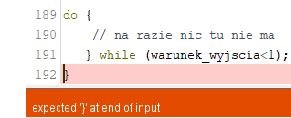I recently ordered two electrical switch modules from Zamel for controlling lights and roller shutters via WiFi from my phone:
 .
.
By the way, I found out that this box is controlled by an ESP8266. I was wondering how it could be controlled by my Wifi if the device doesn't know my WiFi password, and supposedly everything is configured wirelessly.
Turns out they did it in a very interesting way:
1. after pressing the only button for a minimum of 5 seconds, the device enters configuration mode
2. after entering this mode, in the available WiFi networks, I see an open connection with a name (e.g. ZAMEL_ROW-02)
3. after connecting and typing 192.168.4.1 in the browser, a window pops up with the possibility to type in my WiFi network and password (and a few other things)
4. after saving these changes and restarting the device, it already connects to my WiFi network and I can control it from my phone.
The topic interested me, because often when I do some circuitry on my ESP32, there is a need to correct some parameters and remember them. In order not to have to do this every time I upload a program from the Arduino IDE, I sometimes write applications in Visual Studio that communicate via the UART with the ESP32. However, each time I have to approach the computer and make a wired connection.
Could you please guide me to some sites with this kind of subject matter where I can learn about something like this. I am talking about setting up a WiFi network on the ESP32, how is this possible?
 .
.
By the way, I found out that this box is controlled by an ESP8266. I was wondering how it could be controlled by my Wifi if the device doesn't know my WiFi password, and supposedly everything is configured wirelessly.
Turns out they did it in a very interesting way:
1. after pressing the only button for a minimum of 5 seconds, the device enters configuration mode
2. after entering this mode, in the available WiFi networks, I see an open connection with a name (e.g. ZAMEL_ROW-02)
3. after connecting and typing 192.168.4.1 in the browser, a window pops up with the possibility to type in my WiFi network and password (and a few other things)
4. after saving these changes and restarting the device, it already connects to my WiFi network and I can control it from my phone.
The topic interested me, because often when I do some circuitry on my ESP32, there is a need to correct some parameters and remember them. In order not to have to do this every time I upload a program from the Arduino IDE, I sometimes write applications in Visual Studio that communicate via the UART with the ESP32. However, each time I have to approach the computer and make a wired connection.
Could you please guide me to some sites with this kind of subject matter where I can learn about something like this. I am talking about setting up a WiFi network on the ESP32, how is this possible?











